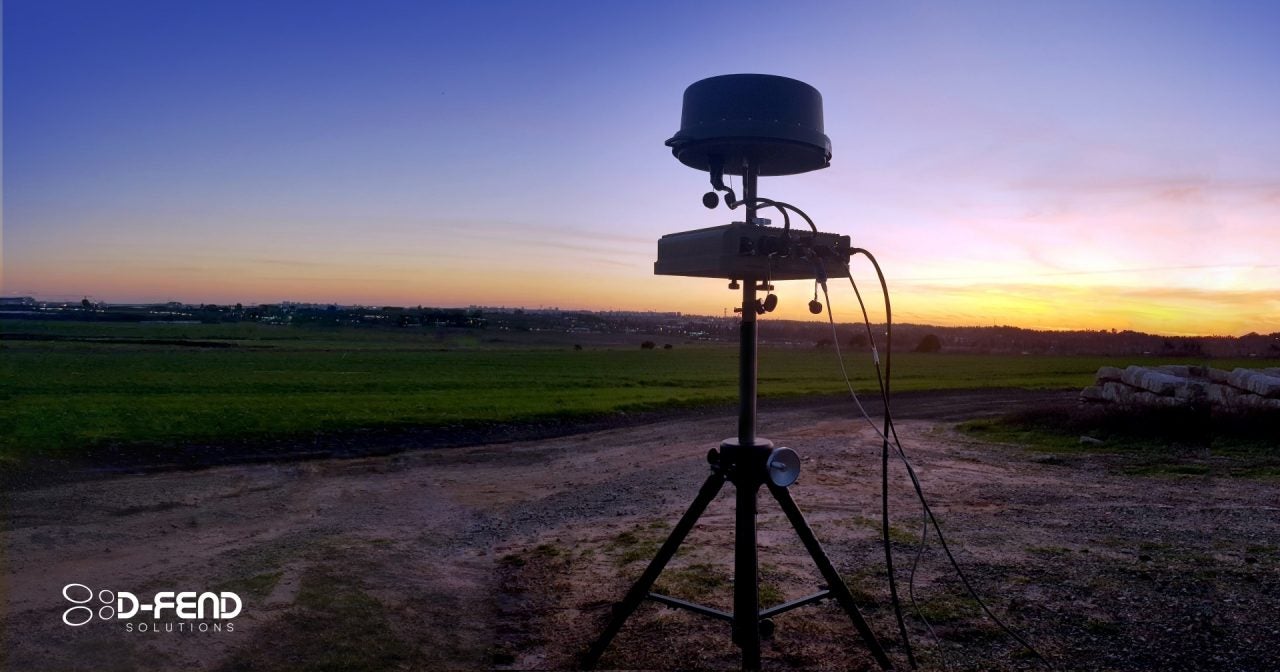
As drones become an increasing presence, concerns regarding their safety grow, especially when it comes to their coexistence with the regular aviation market.
People became particularly wary of drones in 2018 when Gatwick Airport was shut down for two days because of unconfirmed reports of drone sightings near the airport.

Discover B2B Marketing That Performs
Combine business intelligence and editorial excellence to reach engaged professionals across 36 leading media platforms.
The Gatwick drone incident was not the only instance where drones were used with hostile intent. ISIS have adapted commercial drones, mainly to use as remotely piloted bombs, since 2016. In another instance, drones were used in an attempt to assassinate Venezuelan President Nicolas Maduro in 2018.
To combat the hostile use of drones, companies such as counter-drone technology company D-Fend have developed technologies that can safely take them down without causing airspace problems or collateral damage.
D-Fend chief marketing officer Jeffrey Starr explains how D-Fend technology works and why it is needed as the market for drones becomes bigger.


US Tariffs are shifting - will you react or anticipate?
Don’t let policy changes catch you off guard. Stay proactive with real-time data and expert analysis.
By GlobalDataCredit: D-Fend.
Ilaria Grasso Macola (IGM): Are drones a threat to aviation?
Jeffrey Starr (JS): There’s a number of different aspects for the way you can look at the drone threat to aviation. First of all, you have the different types of threats such as a clueless user creating a collision or more malicious kinds of attacks. These include surveillance or espionage, where malicious actors may be wanting to observe an airport for potential future incidents.
There are different use cases or scenarios; it’s not only day-to-day aviation but, for example when you have a VIP travelling, the airport might have to take special precautions above and beyond the normal threat to operations.
Drone threat is not just an ongoing issue but it’s an issue that’s very dynamic and airports have to prepare for different scenarios depending on the traffic flow and day-to-day operational life.
Another aspect is the whole physics of it, especially in terms of the speed of the drone and the speed of the aircraft and you know what could potentially happen in terms of damage, for example to the windshield, or even more serious structural damage to a wing or something like that.
IGM: Are some types of drones more dangerous than others?
JS: A proper part of a defence strategy for an airport does have to recognise that different drones represent different threats.
On the one hand, you have potentially more dangerous high-endurance drones that can travel long distances and carry heavy payloads. Then you have the DIY drones, drones that are not from a manufacturer but that someone could put together from off-the-shelf components and those, depending on their capabilities, can pose a threat.
And then you have the drones driven by Wi-Fi which are typically smaller and could potentially pose a lesser threat because they can’t carry out very high payload or can travel long distances. Prioritisation, characterisation and segmentation have to be conducted when an airport is analysing which drones could present a potential threat.
IGM: What can be done to protect aviation as well as people from the drone threat?
JS: There are a number of technologies that can be deployed to help with this, but what we have to take into account with the airports is that they are an extremely different sensitive environment compared with where traditional legacy counter-drone technologies emerged from.
To understand better, it’s important to separate between detection and mitigation. On the detection side, there are a lot of traditional technologies such as radar that have challenges as they can detect a lot of false positives, confusing drones for other things, including birds.
Another technology used is optical detection, but it requires a clear line of sight, and if you have airports in urban environments, you don’t always have a clear line of sight. You also have acoustic methods which are you know based on sound, but when you have a very noisy airport environment, that can become a challenge as well.
IGM: How does D-Fend counter-drone technology work? What are its benefits?
JS: All these challenges are the reason why we advocate for an approach based on what we call a cyber takeover, where we can detect communications between the pilot’s remote control and the drone and penetrate it, taking over the drones’ commands. With this approach not only are we able to do detection in ways traditional technologies can’t but more competitive advantages arise when we switch to mitigation.
If you look at traditional technologies, they fall into two categories: jamming and kinetic. Jamming means disrupting the communication between the remote control and the drone but it has a lot of problems because it can disrupt communications of nearby technologies and it’s also temporary.
Kinetic means shooting down the drone, but it can’t be done in an airport environment because of the huge potential for collateral damages. That is why cyber takeover is the safest technology because it allows for continuity, preventing an incident from becoming an incident while allowing airport operations to continue.
IGM: What kind of challenges could counter-drone technology encounter when removing a threat?
JS: One of our challenges is to constantly come up with technology that can counter each drone as it comes onto the market. Another one is education, as this is brand-new technology and a lot of customers come from using traditional counter-drone technologies.
There’s somewhat of an education process but the good news is that our technology is very easy to operate. Once people get involved with the demonstration, they become fluent in it quite quickly.
We’re very conscientious to customise the implementations to each local environment, as there may be regulatory issues in terms of which body can do the detection and the mitigation. So, we have to adapt and adopt to each environment, according to their local requirements and regulations.
IGM: How necessary will counter-drone technology become as drones increasingly become part of the aviation landscape?
JS: Post-Covid we’re going to have an increase in airports getting back to their highest capacities and, at the same time, a bigger proliferation of drones. So that combination increases the potential for risk and the potential requirements for this kind of technology to be able to take over in those situations.
We’re not anti-drone, we’re actually the opposite. We want to enable the new drone economy, so it’s very important that more sophisticated technologies emerge, which for example can distinguish and identify between a friendly authorised drone and a hostile unauthorised one.





